And When Did You Last See Your Father?
- 11th November 2022
At this time of year, like many of us I’m sure, I look back and review the year. The best and the worst bits, the excitement and the woe, the good days and the times perhaps you’d rather forget. Whilst this year has been a good one for all sorts of reasons, the hardest event was the death of my grandad. He died in May, a week after his 86th birthday. Like our beloved Queen Elizabeth II who died in September, his stalwart presence in our lives for so long has meant that the reality of a life without him, has been hard to come to terms with. However, in large part due to conversations I had with him about the history of our family over the past few years (and using Ancestry, Find My Past, The National Archives and General Register Office (GRO) Index) I not only have better understood my grandfather’s early life but made an amazing discovery – my great grandfather took part in the largest naval battle of the First World War, The Battle of Jutland.
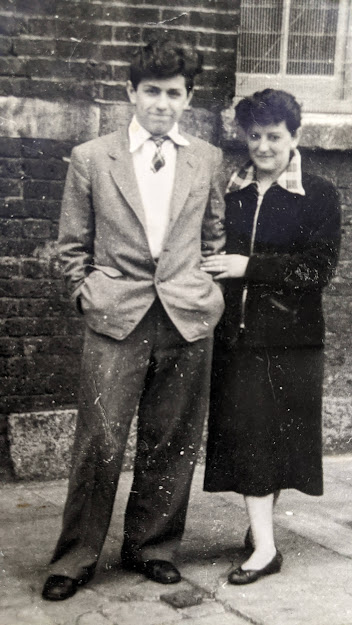
My grandad appearing almost unrecognisable to me in his twenties, pictured with his wife Maureen © A. Roach
My grandad Mr. Paul Gove and his brother Stuart Gove (my great uncle) were inseparable in life. I think as a much younger person I took for granted, or perhaps couldn’t quite comprehend that they had lived so long and seen so much of what they talked of before me and my family knew them. Paul and Stuart were of the last generation who had lived through a world war – something completely alien to millennials like me – they had endured the hardship, the devastation and the uncertainty of a world at war, something I hope we all will never have to experience.

Marriage Certificate for Henry Gove & Maud Olive Balsom on 4th December 1926
Searching the 1939 Register they are listed at Armada Street, Plymouth, along with their brother Peter Gove (though redacted due to the 100 year rule) and parents Maud Olive and Henry Gove. Using the GRO Index, I discovered, through ordering their Marriage Certificate, as described by my grandfather, they were indeed ‘married in Torquay’ on 4th December 1926 and listed at Higher Union Lane, Torquay. Paul and Stuart were 9 and 13 years old when war broke out. Sadly, their mother, my great grandmother Maud Olive died only a year later. Like many children, they were evacuated to the countryside at Launceston, Cornwall, later returning to live with their aunts in Exeter for a time.
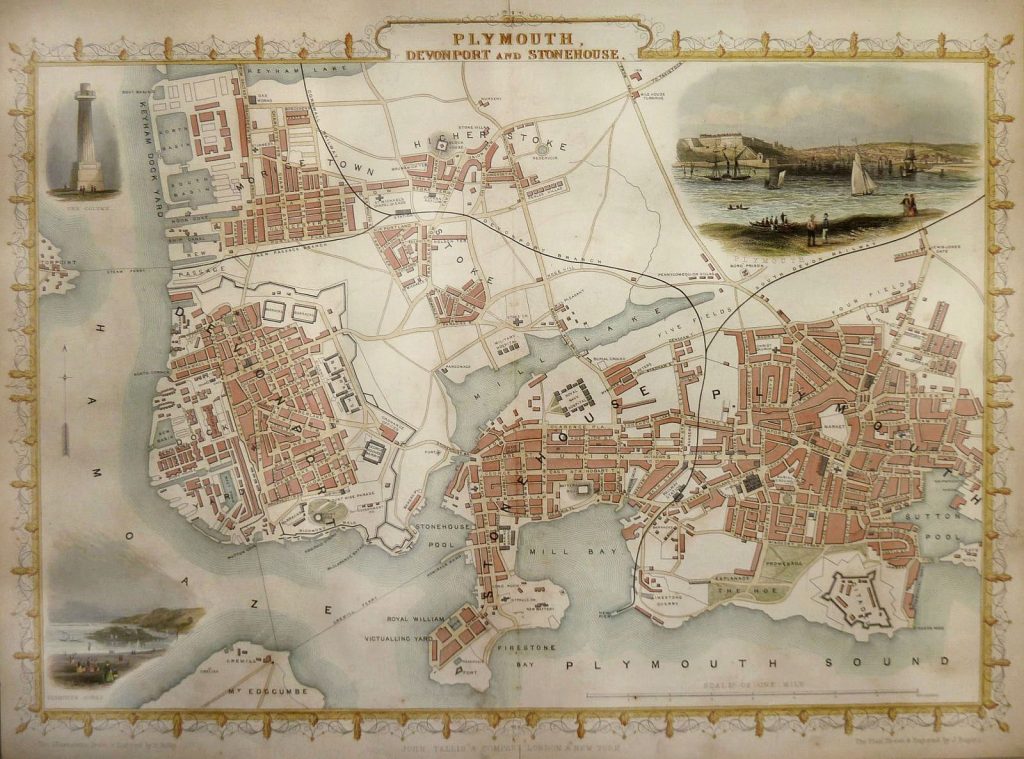
Map of c.1854 showing the Three Towns of Devonport, Stonehouse & Plymouth © Public Domain
It must have been a difficult time for Paul’s father Henry, who was serving in the Royal Navy and having the responsibility of his two young children at a time of war. When I was younger both brothers talked animatedly about their days employed at Plymouth’s Devonport Dockyard. Devonport was originally a separate town from Plymouth. It grew around the dockyard called Plymouth Dock up to 1823, after which the townspeople petitioned for it to be renamed Devonport. Twenty years later it became known as Devonport Royal Dockyard. In just under three centuries over 300 vessels were built at Devonport, the last being HMS Scylla later sunk in 2004 as an artificial reef.
When Paul and Stuart joined the Dockyard explaining that they wished to follow in their father’s footsteps – it was a case of a simple appointment and in no-time at all you could be inducted into your area of interest (though I’m sure it wasn’t that easy for every profession) certainly nothing like today’s exhaustive application process! Whilst Paul worked in the machine shop, Stuart operated stationary and mobile cranes at the Dockyard. They would talk fondly of seeing warships and frigates coming into Plymouth Sound regularly and events to mark special anniversaries.
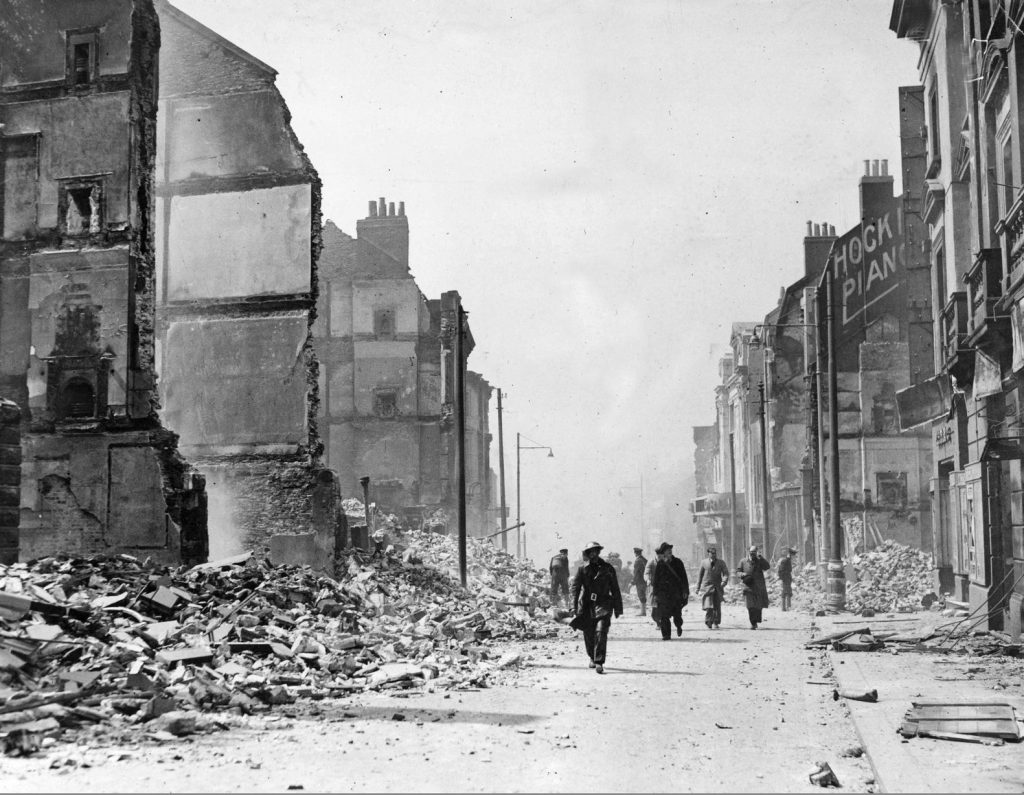
Fore Street, Devonport during The Blitz in Plymouth 23rd April 1941 © Public Domain
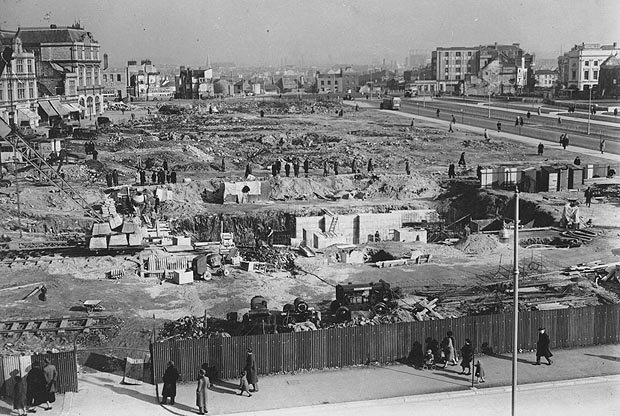
Plymouth City Centre after the Blitz c.1940’s
The highly dedicated Joan Vickers twice elected as MP for Devonport describes the state of Plymouth in 1956 and numbers employed at the Dockyard in Parliament saying: ‘If we could have some definite plans from the Government it would be of enormous assistance to the dockyard towns, many of which have been extensively blitzed. I want to draw attention to the fact that in Plymouth, 24,000 out of 218,000 people work in the dockyard and the victualling yards…If we had unemployment in the dockyard it would lead to great distress in Plymouth.’
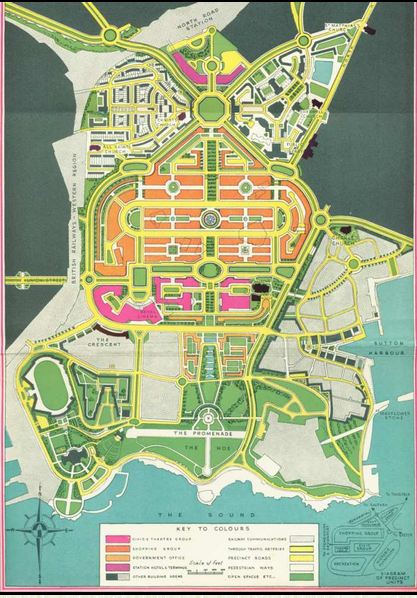
Sir Patrick Abercrombie’s post-war plan for Plymouth © Public Domain
Until nearly the mid-1950’s, Rationing was still in place whilst the rebuilding of Britain’s economy was underway. Plymouth’s medieval centre had been destroyed by the German Luftwaffe during The Blitz of March and April 1941, with only the Dockyard and historic Barbican remaining. You can view original archive film and a summary of The Plymouth Blitz by the team at The Box. A bold plan for Plymouth was designed under Sir Patrick Abercrombie and whilst not fully realised, its wide tree-lined avenues and open-spaces as suggested by Abercrombie are having something of a renaissance with new plans of city regeneration.
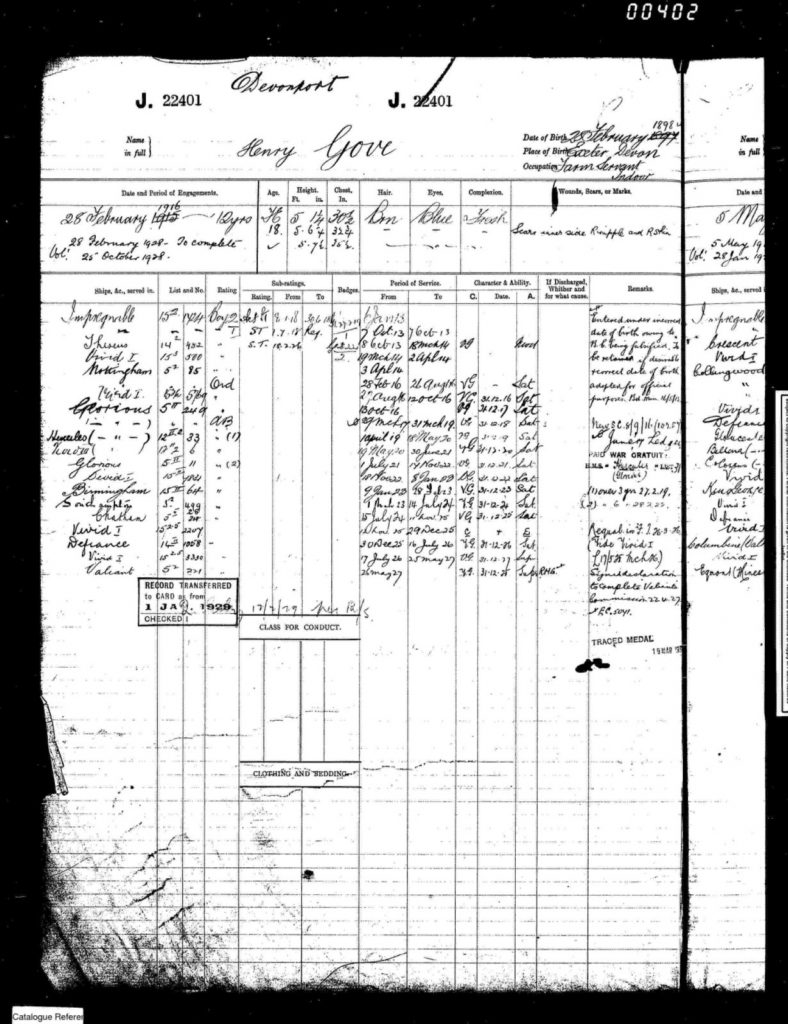
Henry Gove RN Service Record at TNA Reference ADM 188.691.22401
When I asked about my grandad about Henry’s experiences in the First World War, he said he didn’t talk a lot and was tight-lipped about his involvement. Thanks to Find My Past, I was able to learn about Henry’s military record and was led to this page which gave the following information Name, Service number, Birth date, Birth place, Enrolment date, Rank, Regiment and Archive reference number – and confirmed Henry had taken part in The Battle of Jutland. The Battle of Jutland was fought from 31 May to 1 June 1916, off the Jutland Peninsula between Britain’s Royal Navy Grand Fleet, under Admiral Sir John Jellicoe, and the Imperial German Navy‘s High Seas Fleet, under Vice-Admiral Reinhard Scheer and last major battle in history fought primarily by battleships.
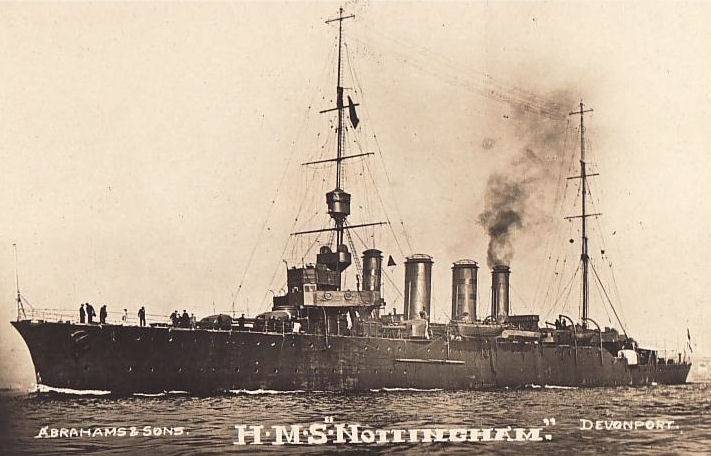
HMS Nottingham
Using his service record here I was able to find out some incredible insights about him and his time in the Royal Navy. I don’t have a picture of Henry but he is described as having brown hair, blue eyes with a fresh complexion – if anyone had to describe me, it would be very similar indeed! As shown on his record, he falsified his birth certificate to join up early –a fairly common occurrence in the services during the First World War. He was 15 when he joined and his occupation was shown as Farm Servant, Indoor. With childhood lengthened as it is today it is hard to imagine a life at sea at 15 years of age. However given his family were farm labourers as shown on the 1911 Census, the opportunity and security of a life in the Royal Navy may have very much appealed to him.
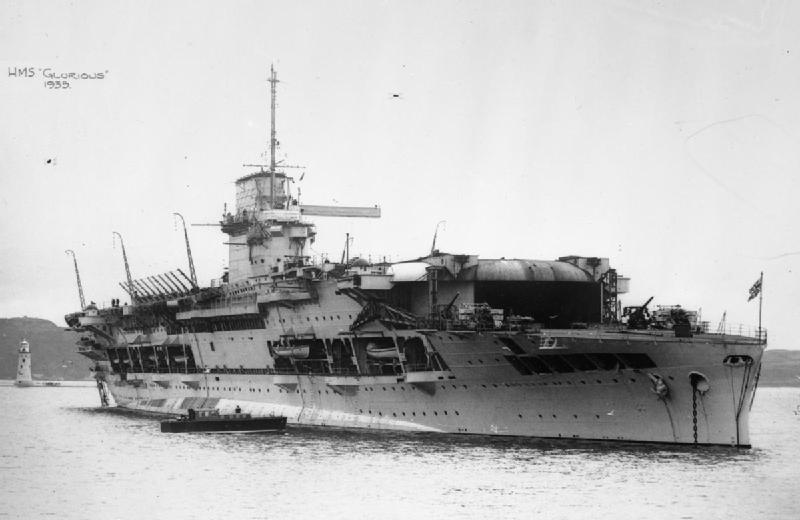
HMS Glorious as an Aircraft Carrier at Anchor in 1935
It is likely based on his record (though I cannot confirm this with absolutely certainty) that Henry was onboard HMS Nottingham following the Battle of Jutland, during the Action of the 19th August 1916 when it was subsequently sunk by German U-52 (I do remember my grandad and great uncle saying that they knew their father had been on board ships which had been later sunk by German U-Boats – though never gave specifics!). He later served on HMS Glorious, the second of three Courageous-class battlecruisers built during the First World War and later converted into an aircraft carrier. Viewing his later service record here using his name, date of birth and service number on the National Archives website confirmed that he served in the Royal Navy from 6th January 1913 almost continuously until he was released on 14th September 1945, serving for over 20 years.
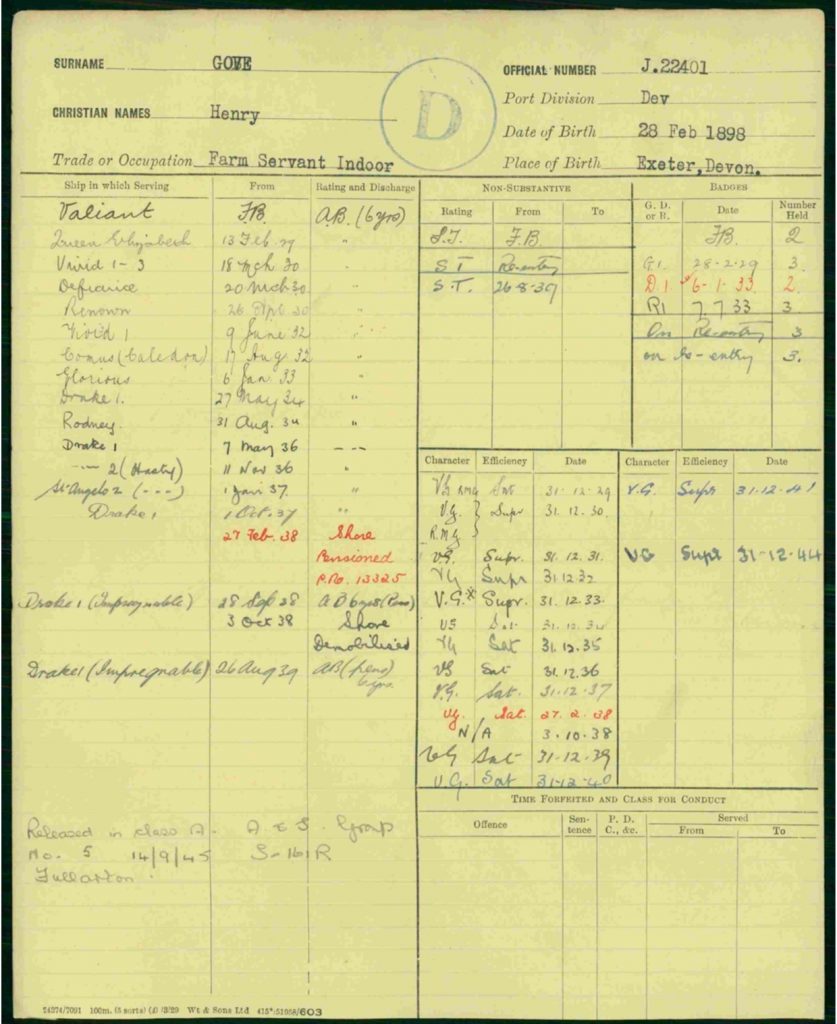
Using the same information I was able to search the UK, Naval Medal and Award Rolls 1793-1972 for Henry’s Medal Roll (there is a helpful Research guide available at British Military and Campaign Medals). It revealed that he was first awarded the Star, Victory Medal and British War Medal and later the Royal Navy Long Service and Good Conduct Medal. Henry Gove had not only inspired his son’s Paul and Stuart who became passionate about Devonport, its naval history and Dockyard, he had served his country with distinction through two world wars.
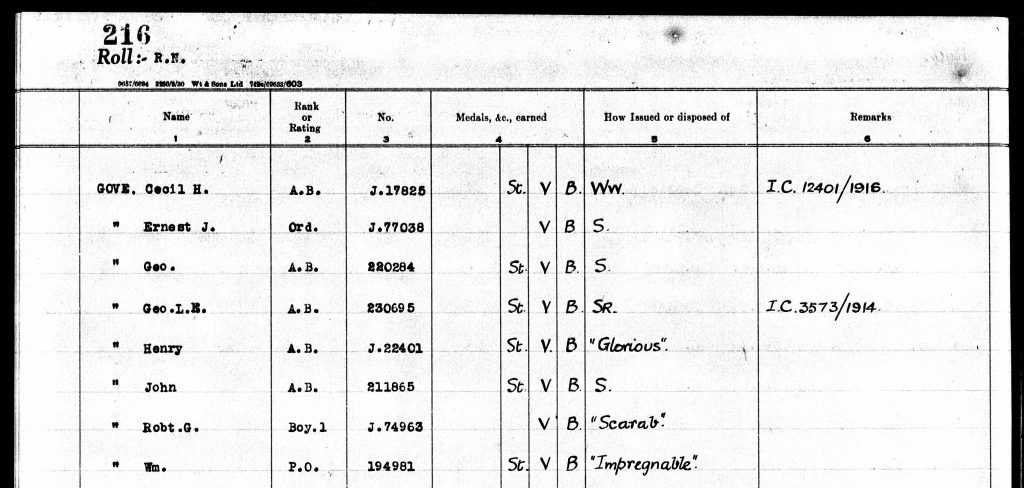
Henry Gove Medal Roll, ‘Glorious’, World War I, Service Year 1914-1920
The irony for me is, I used to visit Exeter with my grandad and great uncle on Saturdays when I was a teenager. I loved Exeter and Torquay and felt strangely at home in both places. I lived in Exeter for 9 years so when I discovered that Henry Gove was born in Exeter I was stunned! In 1911, Henry was living in a cottage with his family in Exminster and is shown at school – it is amazing to think only two years later he would be serving in the Royal Navy. Finding out about Henry via my grandad has reinforced to me the importance of spending time with family and asking questions, often before it’s too late. We all know time flies by and you never know what you might discover about your family!
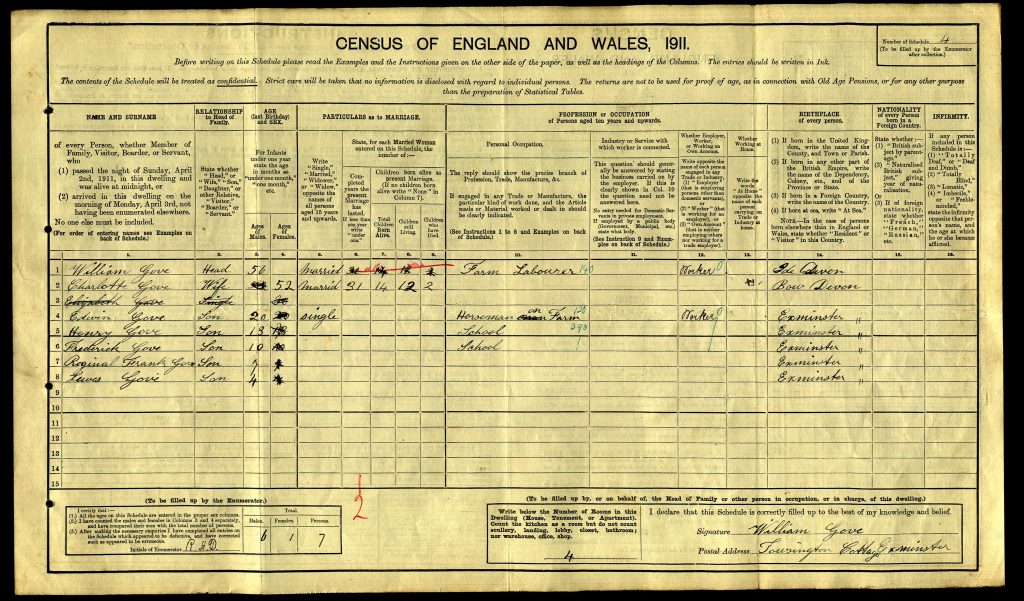
Henry Gove shown at School and living in Exminster on the 1911 Census
Anthony Roach F.L.S.
Post a Comment